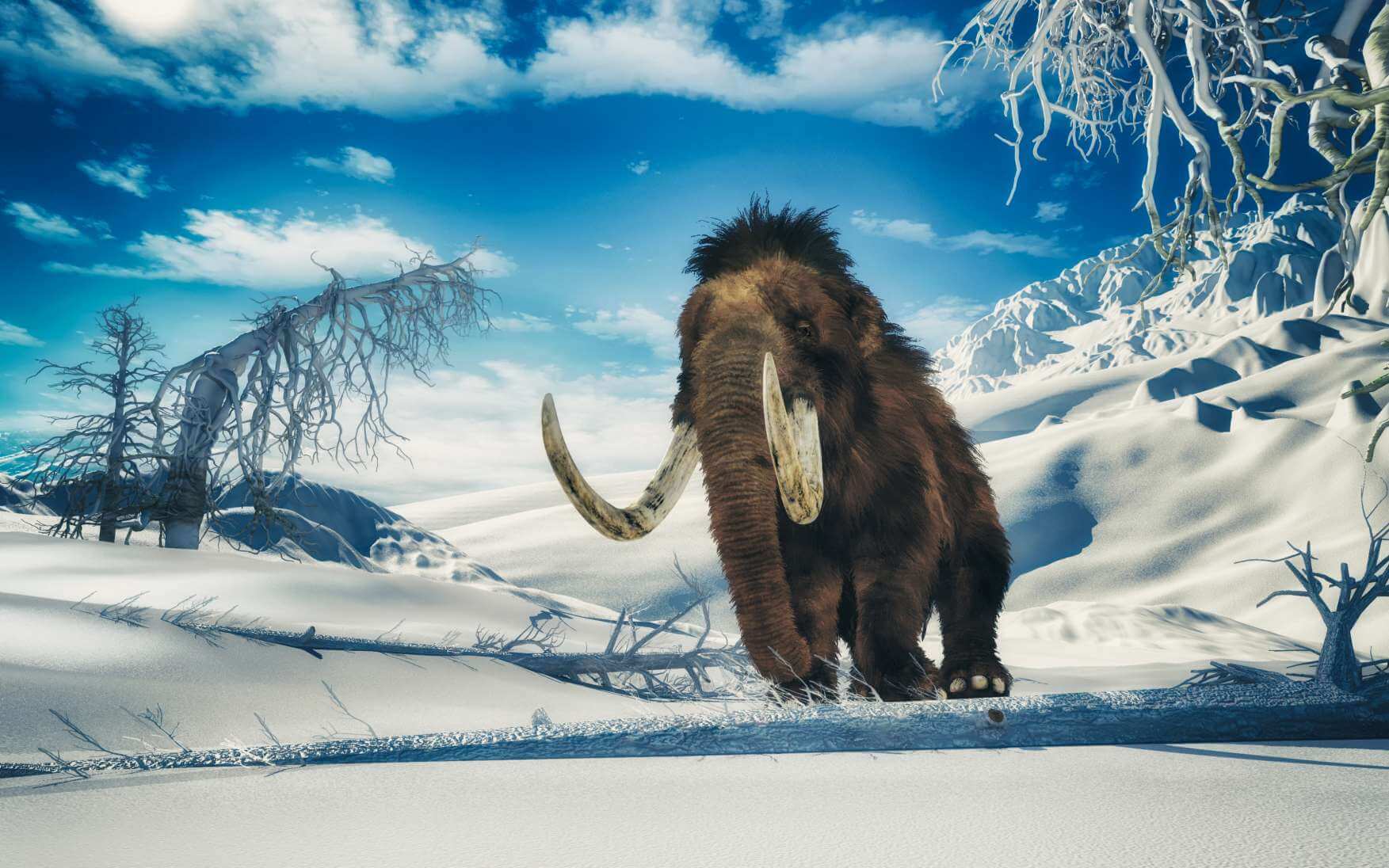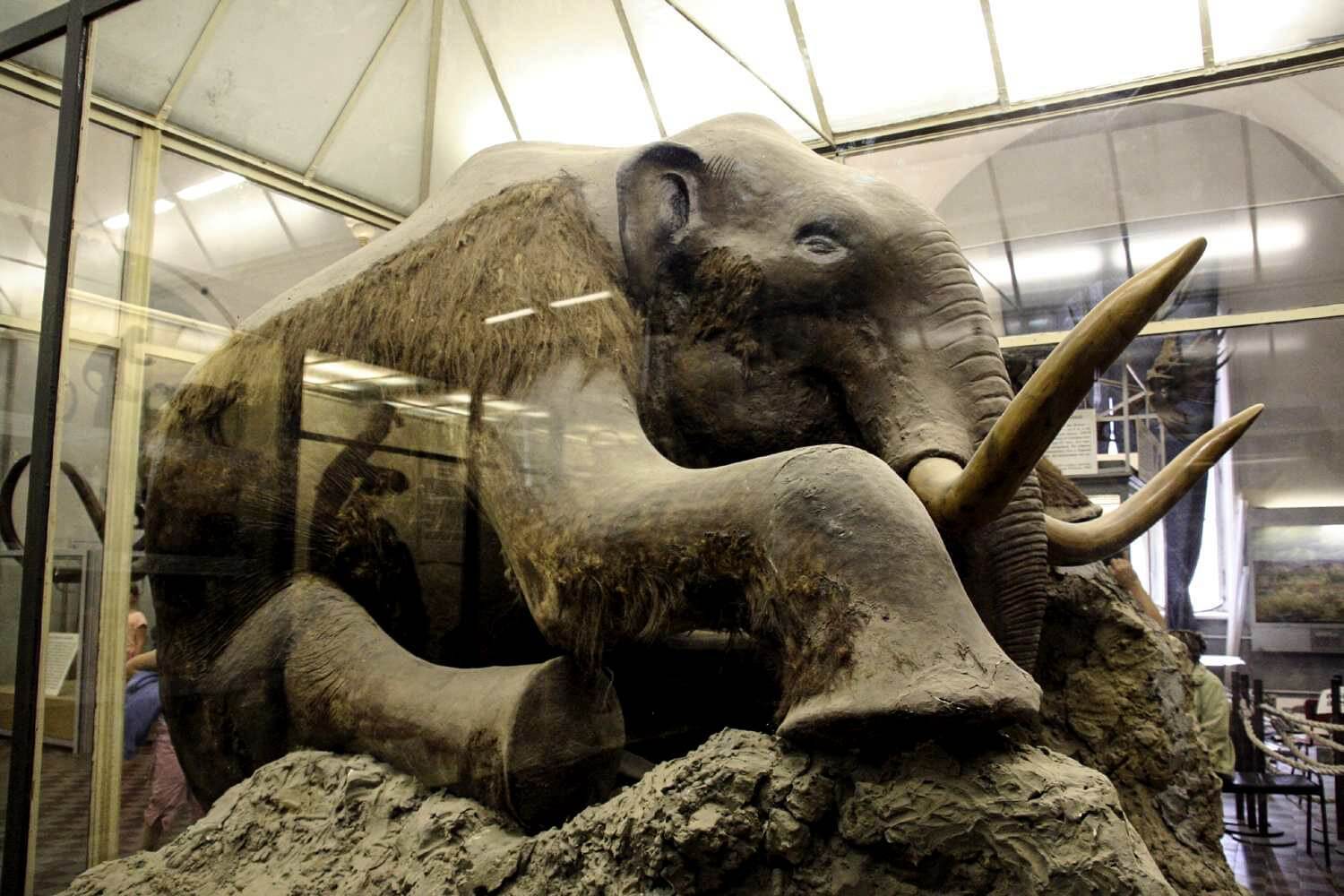
The Mystery of Frozen Mammoth Carcasses In Siberia
Scientists struggle to understand why these animals lived in Siberia and how they died.
By: N. Hale | Ancient Mysteries
While the cause of the Ice Age still remains a mystery for mainstream scientists, the frozen mammoth carcasses found in Siberia have also challenged our imagination for centuries. These carcasses sometimes come with skin, hair, and internal organs including the heart intact with blood inside.

Reports of these discoveries intrigue everyone, for different reasons. One island in the New Siberian Islands, off the Arctic Ocean coast, is described as mostly mammoth bones. Over the years, a lucrative ivory trade developed as thousands of tons of ivory tusks have been unearthed and exported from Siberia. Scientists struggle to understand why these animals lived in Siberia and how they died. We are fascinated with the stories of frozen carcasses with meat fresh enough to eat.
Many questions arise as a result of these strange discoveries. Why would the woolly mammoth, bison, woolly rhinoceros, and horse be attracted to Siberia? Today, Siberia is a barren, blizzard-scourged wilderness. How could the animals have endured the extremely cold winters? What would they eat? Where would the beasts locate the prodigious quantities of water they require when the land is imprisoned in snow and ice? Even the rivers are covered with several feet of ice every winter. Most puzzling of all is how did the mammoths and their companions die en masse and how could they have become encased in the permafrost?
Over time, various clues about the environment at the time of their death have been discovered and studied. Scientists found partially preserved stomach vegetation in some of the carcasses and so could identify the woolly mammoth’s last meal. Solving one mystery just leads to another. They wondered how the stomach contents remained half decayed while the animals froze. This is a problem since it takes a long time to freeze an animal as large as an elephant. A quick freeze came to mind.
A few years ago, Birds Eye Frozen Foods Company ran the calculations to match this idea with reality, and came up with a staggering -150°F (-100°C). Once again, the scientists were puzzled. How could such temperatures be reached on earth, especially when apparently they were in a fairly temperate environment before the quick freeze?
Many theories have been speculated. One of the most popular is that the hairy elephants were peacefully grazing on grass and buttercups and were suddenly struck by a huge freezing storm blowing from the Arctic Ocean. Millions of them froze instantly. This kind of quick freeze has never been observed, so some special and imaginative ideas have been proposed. One question seems to always lead to another.
As if the existence of frozen carcasses isn’t mysterious enough, several aspects of the carcasses are very puzzling.
A number of carcasses, as well as a few skeletons, have been discovered in a general standing position. It looks like the animal sank in a bog, but generally Siberian bogs are not deep enough to bury an animal that size. Also, the majority of the sediment surrounding the carcasses is not bog sediment.
The mammoth discovered near the Berezovka River in Russia in 1900 was found in a sitting position; although it had slumped down the slope probably in a frozen block before discovery. The unique position of this mammoth indicates that the sliding probably did not change the original position of the mammoth at death. Even the trees were still generally upright in the material that slid down the hill.

Strangely, scientists investigating three woolly mammoths and two woolly rhinos, including the Berezovsky mammoth, found they all died by suffocation. For a live animal to die of suffocation, it had to be buried rapidly or drowned.
Several of the carcasses have broken bones. Both of the upper front leg bones and some of the ribs of the Selerikan horse were broken. It was also missing its head. The Beresovsky mammoth had a broken pelvis, ribs, and right foreleg. It takes quite a force to break the bones of a mammoth.
The broken bones have inspired the story that the Berezovsky mammoth was grazing on grass and buttercups when it accidentally fell into a crevasse in the permafrost. Then it was rapidly covered and suffocated. Buttercups, as well as leaves and grasses, were found in the mouth of the Beresovsky mammoth between its teeth and tongue.
Not only is it difficult to explain the upright burial, but even more challenging is the question of how these many mammoths and other animals ended up inside the permafrost layer. Both carcasses and bones had to be buried quickly, below the summer melt layer of the permafrost, before they rotted.
Any plausible theory explaining why woolly mammoths inhabited Siberia and how they died must also be able to explain these carcass puzzles. But until then it remains an unsolved mystery of the Ice Age.
To learn more and to find a number of fascinating explanations for the Siberian woolly mammoths, read this article by Michael J. Oard (Frozen in Time).
* * *
NEXT UP!
Magellan’s Strange Encounter With The 10-Foot Giants of Patagonia
IN 1520, FERDINAND Magellan took time out of his busy schedule of sailing around the world to stop in what is now Patagonia, where he found a naked giant dancing and singing on the shore. Magellan ordered one of his men to make contact (the unwitting emissary’s no doubt hilarious reaction to this sadly has been lost to history), and to be sure to reciprocate the dancing and singing to demonstrate friendship.
It worked. The man was able to lead the giant to a small island offshore, where the great captain waited. Describing the scene was a scholar along for the journey, Antonio Pigafetta, who kept a diary of the journey that was later turned into the book Magellan’s Voyage: A Narrative Account of the First Circumnavigation: “When he was before us, he began to marvel and to be afraid, and he raised one finger upward, believing that we came from heaven. And he was so tall that the tallest of us only came up to his waist,” and had a big, booming voice. The illustration above proves it—Patagonia was once inhabited by giants that positively dwarfed the heavenly Europeans that would come to conquer them.
Alright, maybe that isn’t airtight evidence. But it could well be that the people Magellan encountered, the Tehuelche, were indeed enormous, and that therefore this myth has some grounding in reality. And our trusty explorer would be damned if he wasn’t going to try to bring back evidence in pretty much the most obnoxious way you could imagine.
* * *
READ MORE: Uruk, The First Great City: A Leap Forward For Humankind?
Interesting! Icy Atlantis: Does This Mysterious Dome Structure Hidden In Antarctica Reveal A Lost Ancient Civilization?
Telegram: Stay connected and get the latest updates by following us on Telegram!
We’d love to hear from you! If you have a comment about this article or if you have a tip for a future Collective Spark Story please let us know below in the comment section.
